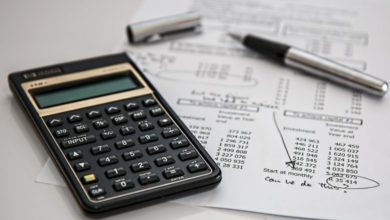
First announced in December 2015, the UK government revealed Making Tax Digital (MTD), an initiative for “the end of the tax return and a transformed tax system”. This roadmap was supposed to be in place by 2020, but as we know, there have been many delays since then. As of right now – February 2024 – Making Tax Digital still hasn’t delivered on its promises.
According to HMRC, the main goal of Making Tax Digital is to make tax administration more effective and efficient, and simpler for taxpayers. In pursuit of making tax as intuitive as possible for as wide a group of people as possible, we can expect that the changes will apply to a wide range of taxpayers, including most businesses, SMEs, the self-employed and landlords, as well as individual taxpayers.
While the full Making Tax Digital initiative has not yet been implemented, the first mandatory use of digital methods was for Value Added Tax (VAT), which was successfully launched in April 2019 for many businesses and organisations. However, Making Tax Digital for Income Tax Self-Assessment (MTD for ITSA) has been delayed until 2026.
Once implemented, businesses and individuals – or their agents – will be required to keep digital records of transactions in order to send quarterly updates to HMRC. For income tax, the quarterly updates will provide the totals of income and expenses. For each tax year, an end-of-period statement will also be mandatorily submitted by 31 January following the end of the tax year. This may include accounting adjustments and claims for reliefs or allowances.
Through the submission of quarterly statements and a yearly end-of-period statement under MTD, HMRC also believes this system will enable a more “ongoing and accurate” projection of tax due, as opposed to the current system of one tax bill at the end of the year.
In March 2017, a government paper had already stated that VAT would become the first tax to move to the digital system in April 2019, but that it would only be made mandatory for businesses and landlords with turnovers above the VAT threshold. This threshold was £85k at that time. This decision was influenced by government findings from 2015, which stated that 99% of VAT returns were already being made online.
One specific thing that has slowed down the implementation of Making Tax Digital has been the integration of taxpayers’ accounts with software, as even major accountancy firms have had to modernise in the nine years since the initiative was announced. HMRC’s consultation from 2017 revealed that spreadsheets can be used if they can meet technical requirements. However, the government body also said that most taxpayers will be using more comprehensive accounting software to avoid the complications of linking a spreadsheet to the digital tax account of small businesses or freelancers. As a result, starting from 2017, HMRC worked with accounting software developers to ensure that taxpayers are able to make the switch to digital tax.
That said, Making Tax Digital was removed from the 2017 Finance Bill ahead of the June election, which led to speculation that the programme had been entirely dropped. However, in July of that year, the government confirmed the 2019 timetable, and stated that it would be at least two more years before digital records would begin for other taxes.
In 2018, the National Audit Office reported that changes to Making Tax Digital’s scope and delays had “deferred the benefits for HMRC”, and that overall, it expected the initiative to cost rather than benefit business taxpayers.
According to the NAO’s 2021 report, the challenges in implementing digital change highlighted common problems that departments encounter, such as having unrealistic ambition and timescales with unknown levels of risk; not engaging adequately with commercial partners; and underestimating the complexity involved in moving from legacy systems.
Even so, while tackling legacy systems has proven costly and complex, the National Audit Office concedes that to continue using them would be risky and leaves the government facing greater costs and risks in the future. The biggest risks include service disruptions and even cyber-attacks.
From all of this information, it can be surmised that HMRC’s original plan to introduce Making Tax Digital by 2020 was not realistic. The NAO expressed in its June 2023 Report on MTD that this ambitious initiative requires significant behavioural, administrative and technological change for the programme to succeed. What’s more, the timeframes for Making Tax Digital were agreed before HMRC had fully explored the range of options.
At the time of MTD’s unveiling, HMRC considered whether to sequence work, by either starting with digital record keeping for business taxpayers, or first replacing its legacy systems, but concluded that sequencing these elements would not meet the government’s published timetable. As a result, HMRC proposed to do both at the same time, without fully assessing the scale of work required at the outset of the MTD programme, or the additional complexity of introducing digital record keeping for business taxpayers at the same time as replacing its legacy systems.
In March 2022, HMRC reported that there was a high likelihood Making Tax Digital was generating additional tax revenues by making it easier for businesses to get their tax right. The department estimated this equated to roughly between £185m to £195m of additional VAT for 2019/20. To find out more, HMRC compared those who signed up early to Making Tax Digital with similar businesses that did not. This modelling suggested that there was a high likelihood that revenues had increased from businesses using MTD, but there remained some uncertainty as to whether some of the increased revenue was due to other factors.
As a result, a new VAT service in August 2022 introduced some extra controls, such as requiring identification for registration and additional verification checks for log-ins. However, the introduction of other controls, such as requiring proof of address had not yet been introduced, which is what the NAO believes may have helped HMRC to achieve additional tax revenues.








